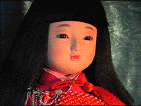 Drama,
Drama,music, and dance are closely interrelated in Asia. Frequently relying on symbolic gestures,
masks or elaborate makeup, and magnificent costumes, Asian dances often narrate stories
based on mythology, historical events, and legends. Performances may last for many
hours.
In India, classical dance forms that almost disappeared have been revived on the basis of
old manuscript descriptions and of temple carvings depicting dance positions. Dance-
dramas and solo dance forms based on the Hindu epics draw on symbolic hand gestures
called mudras. Many of India's folk dances share specific characteristics with the more
refined classical dances.
Japan is rich in folk dances, many of them of a religious nature. In addition, Japan
possesses two major forms of dance-drama, No and kabuki. No, about 500 years old, is an
extremely slow-paced dance and opera form full of symbolic meanings. Kabuki, developed
in the 17th century, is a more popular form in which many theatrical devices are used.
 Peking opera is the best-known genre of Chinese dance-drama. Developed in the mid-19th
Peking opera is the best-known genre of Chinese dance-drama. Developed in the mid-19thcentury from earlier varieties of Chinese opera, it includes spectacular acrobatics as an
important part of the action. In the 1950s the Chinese government began promoting
productions based on European ballet and emphasizing themes relevant to China's
contemporary political and social environment.
In Indonesia, especially in Java, graceful female dancers formerly entertained royalty with
refined forms of court dance; they lived at court, and their dances were not seen by the
public. In Bali, masked dramas with kings and clowns, war dances, and spirit-possession
dances remain a part of village life.
Africa, Oceania, and the Americas
The dances of sub-Saharan Africa are often connected with masked-dance societies whose
members imitate or are possessed by spirits. Dancing at rites of passage is also common.
Urban dance forms combining African and Euro-American influences have developed in
the 20th century.
Oceanian dances are often associated with storytelling or poetry;
an example is the Hawaiian hula. In New Guinea, dances are frequently performed in
connection with warfare.
The native peoples of North America formerly performed elaborate dance rituals, both for
communal purposes such as assuring social well-being, and for private purposes such as a
vision quest. Many of these rituals still survive. In the past half century, pan-tribal social
dances have developed for performance at intertribal powwows in the United States and
Canada. In Latin America, dances for religious and secular purposes remain a living
tradition among many Native American tribes . Other Latin American dances borrow
directly from African dance movements or combine Spanish movements with elements of
Native American dances.
Future Developments
The modern world will foster more borrowing of dances
among different countries, as well as the creation of new dance forms based on mixtures
of various national styles. Modern peoples have lost the dances of the past millennia
because no method existed to preserve them. Today, with film, videotape, and dance
notation systems such as Labanotation, Effort/Shape, and Benesh notation, the dances of
contemporary cultures can be preserved for subsequent generations.
Relevant Links
Back to Let's Dance!
OR
Home
Background provided by:
Rosie's Backgrounds